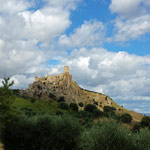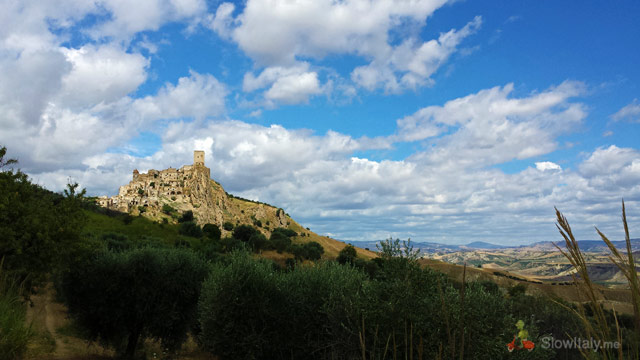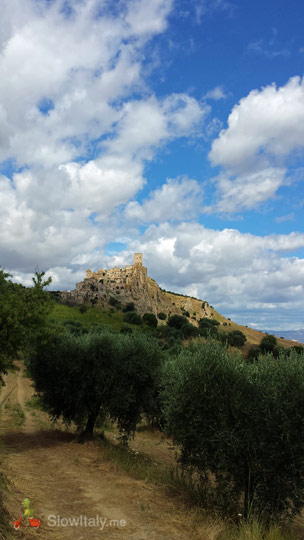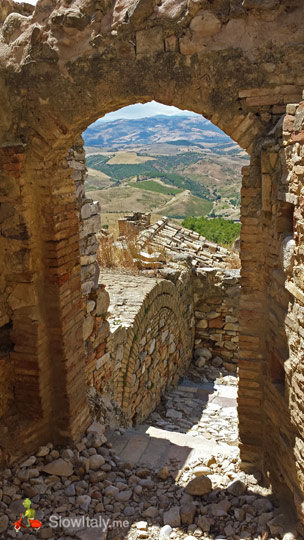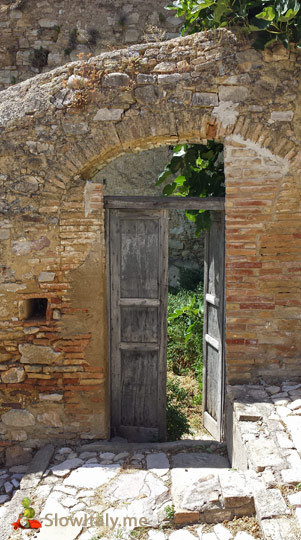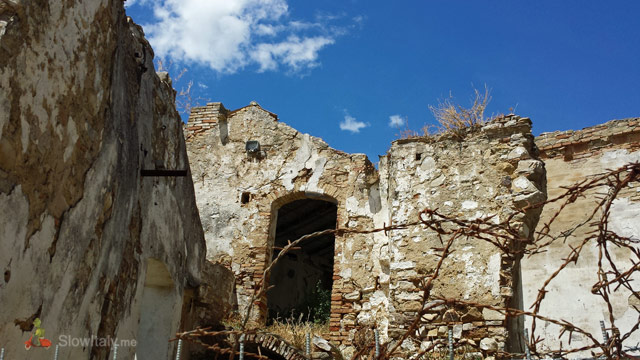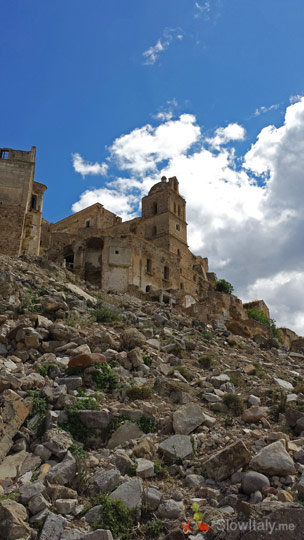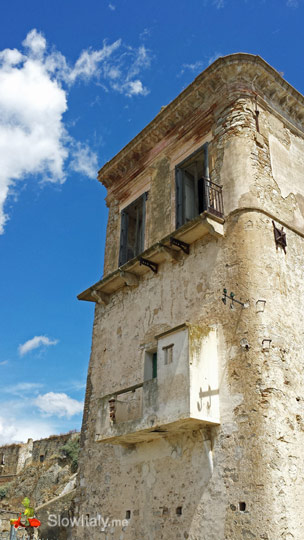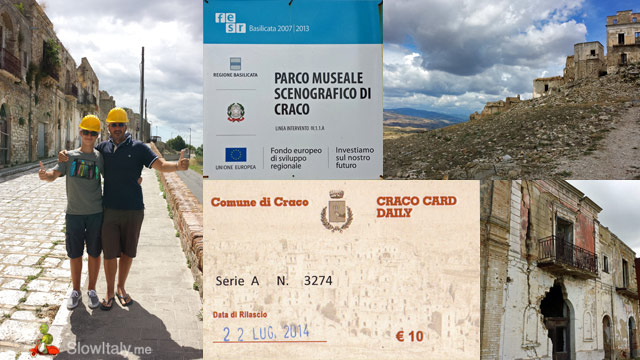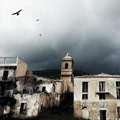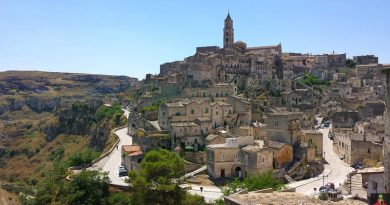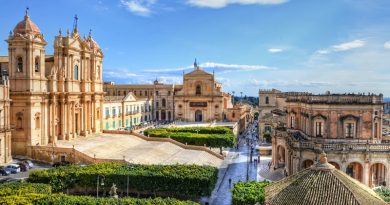The mysterious ghost town of Craco, Basilicata
Craco is located in the Region of Basilicata at about 40 km inland from the Gulf of Taranto at the arch of the “boot” of Italy. Surrounded by the Calanchi Lucani (Lucanian badlands), Craco is one of the abandoned Italian towns offering the rare sight of a true ghost town. With its dramatic landscape and unique atmosphere, its deserted streets and medieval buildings, which seem to have been vacated overnight and left in crumbling decay ever since, the town could inspire many a mystery writer.
The town was built on a hill, composed of clay-rich soil of various types of red, green and dark grey clay, with different levels of drainage rendering the terrain highly unstable. Due to the nature of the terrain, Craco was affected by many landslides of natural origin, in 1600, 1805, 1857, and 1933. Despite the precarious living conditions, the Crachesi (inhabitants of Craco) were very attached to their beautiful medieval town.
Towards the end of the 19th century, the city had reached its maximum expansion limits. A severe famine due to poor agricultural conditions caused a mass migration of Craco’s population, about 1,300 inhabitants, to North America between 1892 and 1922. Several earthquakes between 1959 and 1972 and another severe landslide in 1963, this time due to the town’s expansion, caused the evacuation of the remaining 1,800 inhabitants to a nearby valley called Craco Peschiera, while the original medieval village remained in a state of a ghost town.

The first written account mentioning the town dates back to 1060, when the land was owned by Archbishop Arnaldo, Bishop of Tricarico. However, the oldest building of Craco, the Norman Tower, was built in 1040 and archeological findings trace the early human settlement back to the Iron age.

Craco was once a very prosperous town that contributed financially to the glitz and glamour of the castles built by Frederick II and later by the Angevins. It was one of the 78 universitates in the jurisdiction of Basilicata.The universitates (not: universities!) were municipalities in Southern Italy which were built under the Longobards and subsequently feudalized under Norman rule. Legend has it that the town was once called Monte d’Oro, because of its wealth of wheat fields. A more plausible etymology is the ancient name of Grachium, by which the town was known in ancient times, meaning “little plowing field”. The town reached its peak in population and prosperity in the 16th century.
By the end of the 19th century Craco counted several magnificent noble palaces, among which the Palazzo Rigirone, Palazzo Cammarota, Palazzo Miadonna and Palazzo Carbone, adorned with beautiful marbles and woodwork, colorful frescoes and impressive chandeliers, all of which have been robbed over time, leaving only the bare stone.
One of the patron saints of Craco is Vincenzo, Martyr of Craco, a minor saint of the Roman Catholic Church, remembered in devotions by the people of Craco and immigrants and their descendants who settled in North America. San Vincenzo’s feast day is celebrated on the fourth Sunday of October. The main church of Craco, the Chiesa Madre San Nicola, built in the 14th century, was dedicated to San Nicola of Bari, bishop of Myra, also patron saint of the city of Craco. The Crachesi also celebrate the Madonna della Stella, on the frist Sunday of May.

Another symbolic little church was the chapel of the Virgin of Monserrato, built on the main square of the Old town, which was unfortunately completely destroyed during a landslide.
Because of its dramatic landscape and unique atmosphere Craco has been used as a backdrop for many movies, among which Mel Gibson’s The Passion (more specifically, the hanging of Judas), the James Bond movie Quantum of Solace and Bruce Beresford’s King David.
More about ghost towns in Italy at: http://slowitaly.yourguidetoitaly.com/2013/10/ghost-towns-abandoned-villages-in-italy.
Practical info:
For decades this wonderful architectural heritage was left to decay, at the mercy of vandals, robbers and the elements . About 4 years ago the city decided to recover the site, restoring what could be restored and safeguard the tumbling buildings from further man-made deterioration by fencing the site.
For safety reasons we recommend to not enter the fenced perimeter by yourselves but to book the organized tour instead, where you will be given a safety helmet and instructions for a safe visit, as well as a wealth of historic information. Tours take place every day from 10 am to dusk. To book a tour call Vicenzo at +39/329.47.81.495. A day card for a tour cost 10 €. While some may find it tempting to skip the organized tour and go for a wild walk instead, please note that the fees are a small contribution to help maintain the site.
The meeting point is at the “Mediateca” in Via S. Angelo in Craco Vecchia, a small part of town that has been rebuilt a bit further outside the ghost town itself. Coming from Pisticci or Policoro by car (SS176 or SS103, respectively) you have to pass the new town Craco Peschiera and continue for about 15 to 20 min.
You may also like:
Matera, the unique underground town
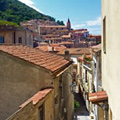
Maratea, the charming little town with 44 churches in Basilicata
Photo credits: all photos © Slow Italy.

